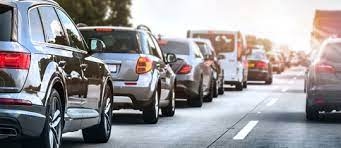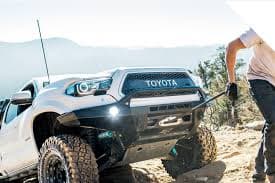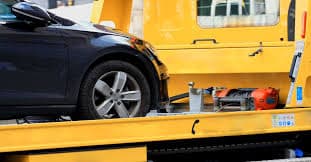Los Angeles Freeway Survival Guide: How to Stay Safe and Avoid Delays
Los Angeles is known for its vast freeway network and heavy traffic congestion. Whether you’re a daily commuter or a visitor, navigating LA’s freeways can be challenging. However, with the right strategies, you can minimize stress, avoid unnecessary delays, and stay safe on the road. This guide will provide essential tips to help you survive LA’s freeways and ensure a smoother driving experience.
1. Understanding LA’s Freeway System
Los Angeles has an extensive freeway network with multiple major highways, including:
- I-405 (San Diego Freeway) – One of the busiest freeways, notorious for traffic jams.
- I-10 (Santa Monica Freeway & San Bernardino Freeway) – A crucial east-west route with heavy congestion.
- US-101 (Hollywood Freeway & Ventura Freeway) – Runs through downtown and connects to the San Fernando Valley.
- I-5 (Golden State Freeway) – A major north-south route prone to bottlenecks.
- CA-110 (Harbor Freeway & Pasadena Freeway) – One of the oldest and busiest freeways in the city.
Familiarizing yourself with these freeways and their key junctions can help you navigate more efficiently.
2. Best Times to Drive to Avoid Traffic
LA’s notorious traffic peaks during rush hours, making strategic planning essential:
- Best Times to Drive: Early mornings before 6:30 AM, mid-mornings (10:00 AM – 2:30 PM), and late evenings after 8:00 PM.
- Worst Times to Drive: Weekday rush hours (7:00 AM – 10:00 AM and 4:00 PM – 7:00 PM) and Friday evenings (3:00 PM – 8:00 PM).
- Weekend Traffic: Saturdays and Sundays see congestion in tourist-heavy areas, particularly near beaches and shopping centers.
3. Essential Safety Tips for LA Freeways
Safety should always be a top priority while driving in LA. Follow these precautions:
- Stay Alert: Watch for sudden stops, lane changes, and distracted drivers.
- Keep a Safe Distance: Tailgating is common but dangerous. Maintain at least a 3-second following distance.
- Use Turn Signals: Many drivers change lanes frequently. Signaling your intentions can prevent collisions.
- Avoid Road Rage: Heavy traffic can be frustrating, but staying calm and patient is key.
- Watch for Motorcycles: Lane-splitting is legal in California, so always check for motorcyclists before changing lanes.
4. Best Alternate Routes to Avoid Congestion
Sometimes, avoiding major freeways can save time. Consider these alternatives:
- Sepulveda Boulevard: Runs parallel to the 405 and is a great option during peak hours.
- Venice Boulevard & Olympic Boulevard: Good east-west alternatives to the I-10.
- Cahuenga Boulevard & Laurel Canyon Boulevard: Can be used instead of US-101 for Hollywood travel.
- Figueroa Street & Alameda Street: Useful alternatives for downtown LA traffic.
5. Using Technology to Navigate Traffic
Several apps can help you navigate LA traffic more efficiently:
- Google Maps & Waze: Provide real-time traffic updates and alternate route suggestions.
- Sigalert: Offers freeway-specific traffic information and incident reports.
- Caltrans QuickMap: Displays road closures, construction zones, and CHP reports.
6. What to Do in Case of an Emergency
If you experience a breakdown or accident on an LA freeway, follow these steps:
- Move to the Shoulder: If possible, safely steer your car to the side of the road.
- Turn on Hazard Lights: Alert other drivers to your presence.
- Call for Help: Dial 511 for roadside assistance or 911 for emergencies.
- Stay Inside the Vehicle: If you’re on a busy freeway, exiting your vehicle can be extremely dangerous.
- Use Freeway Call Boxes: Located along major highways for emergency communication.
7. Parking and Carpooling Options to Reduce Stress
To reduce freeway congestion, consider:
- Using Park-and-Ride Lots: Convenient locations allow you to park and take public transit.
- Carpooling: High-Occupancy Vehicle (HOV) lanes can significantly reduce travel time.
- Metro ExpressLanes: Toll lanes on I-10 and I-110 offer faster travel for solo drivers willing to pay.
8. Final Tips for Surviving LA Freeways
- Plan Your Route: Always check traffic conditions before heading out.
- Stay Flexible: Be open to adjusting your route based on real-time conditions.
- Keep an Emergency Kit: Carry water, snacks, a phone charger, and emergency tools in your vehicle.
- Maintain Your Vehicle: Regular maintenance reduces the chances of a breakdown on busy freeways.
Conclusion
Driving on LA’s freeways doesn’t have to be a stressful experience. By understanding traffic patterns, using alternate routes, prioritizing safety, and leveraging navigation technology, you can minimize delays and stay safe on the road. Whether you're a local or a visitor, these strategies will help you navigate LA’s freeways like a pro.








